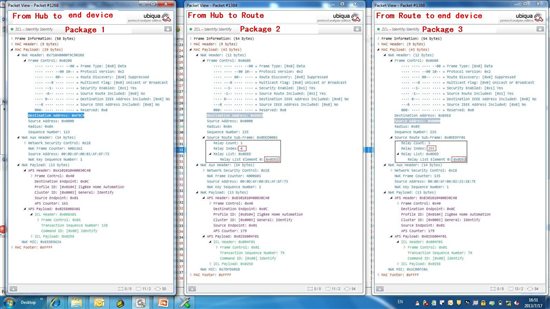Question 1
My device is an end device using z-stack for CC2530.The coordinator send a unicast message to it using source route. After a router (end device's parent) relay the message once, the end device can't see the message in afIncomingData() function.
sniffer image:0x0F80 is end device, 0x4DD2 is router and 0x0000 is coordinator.
Question 2
How do I be notified when the device received a Many-to-one Route Request.



